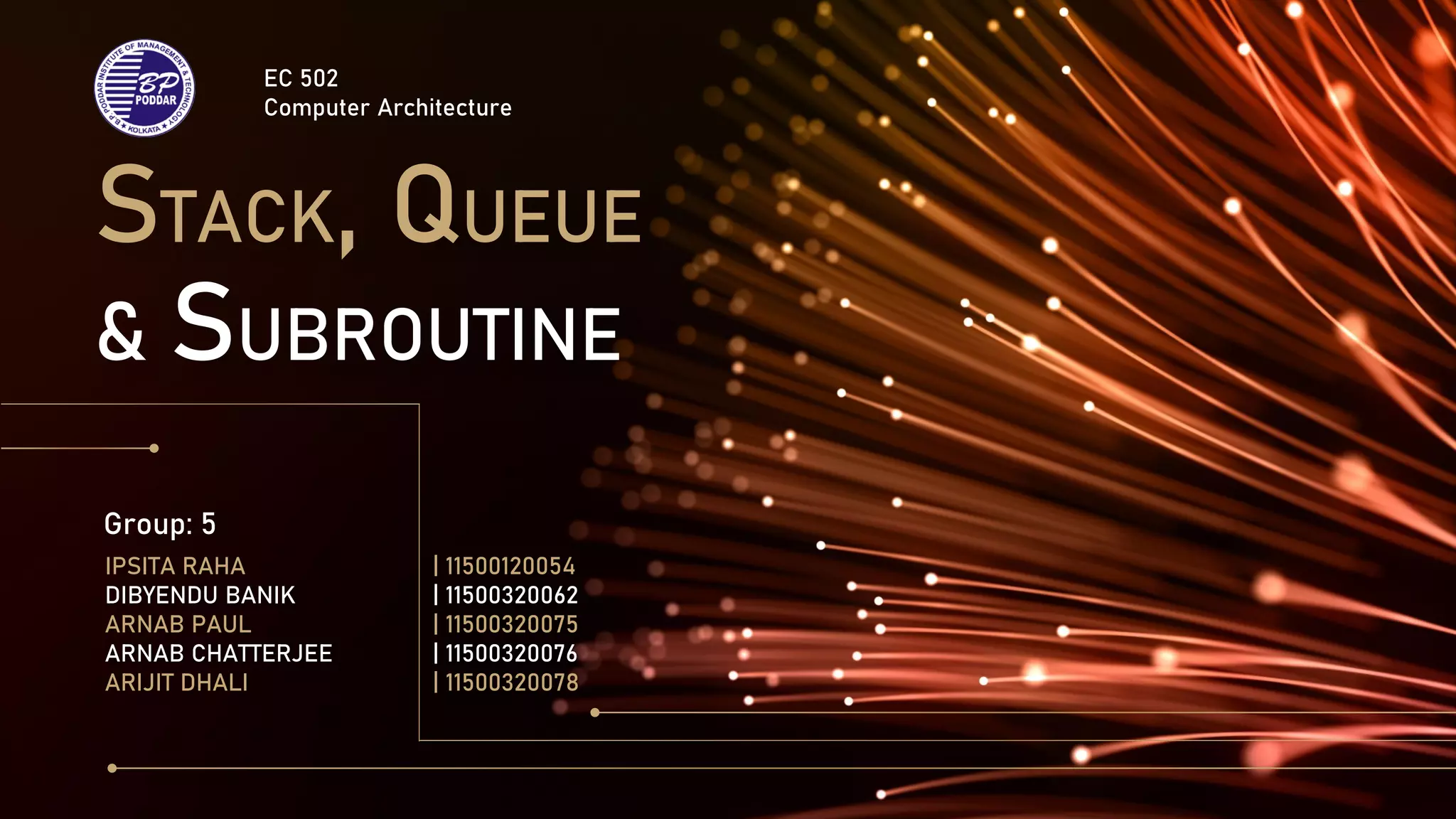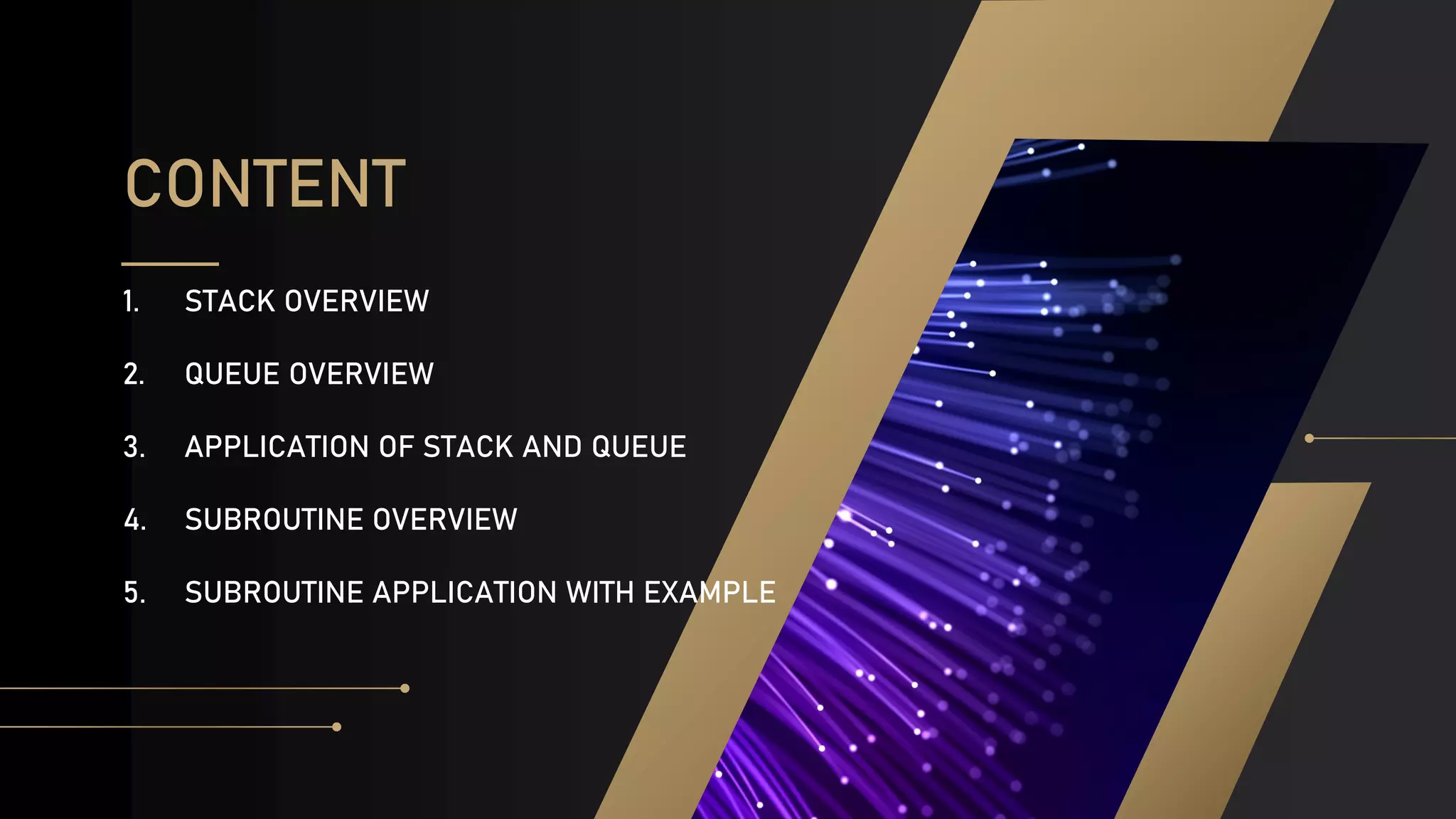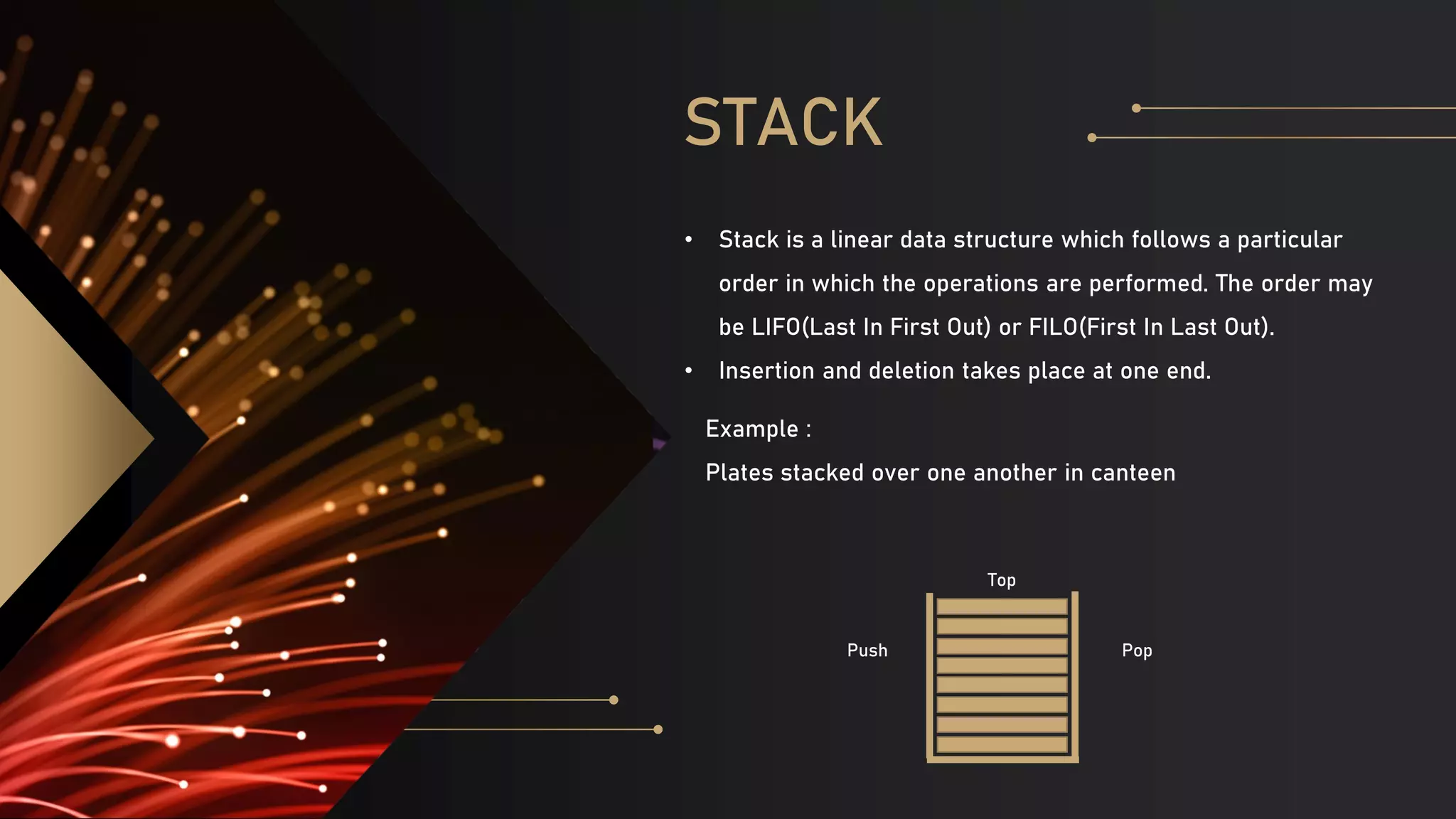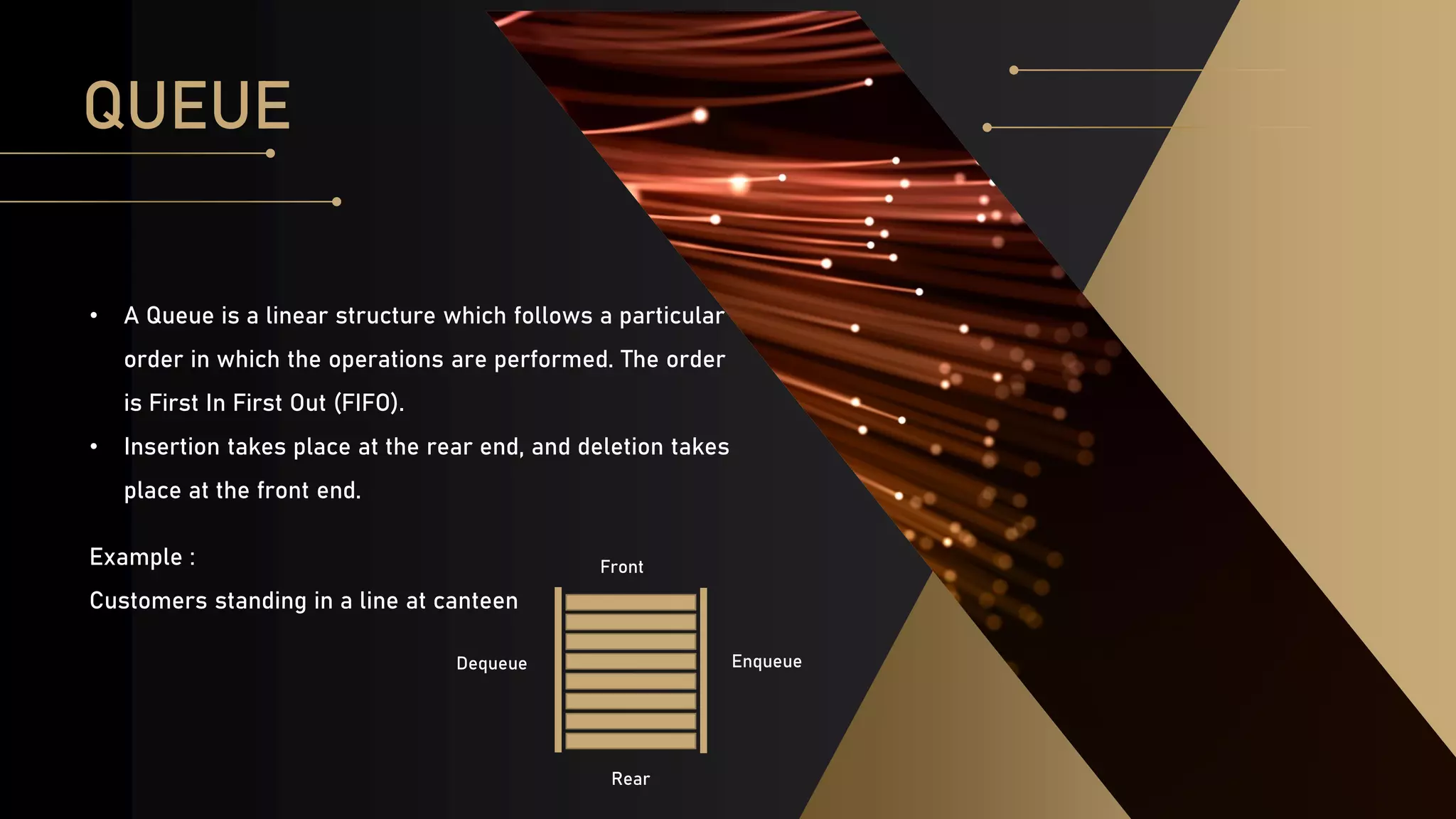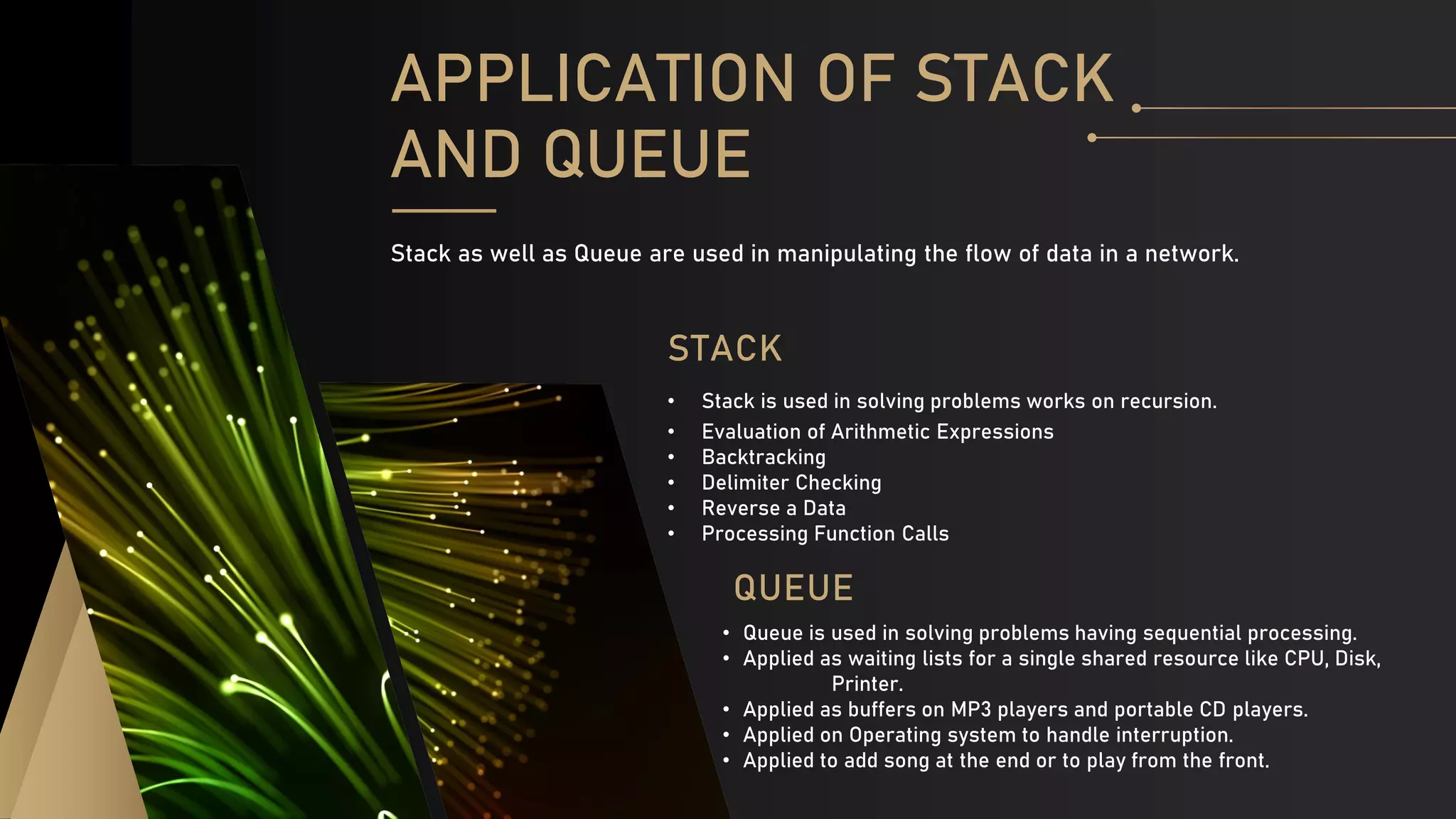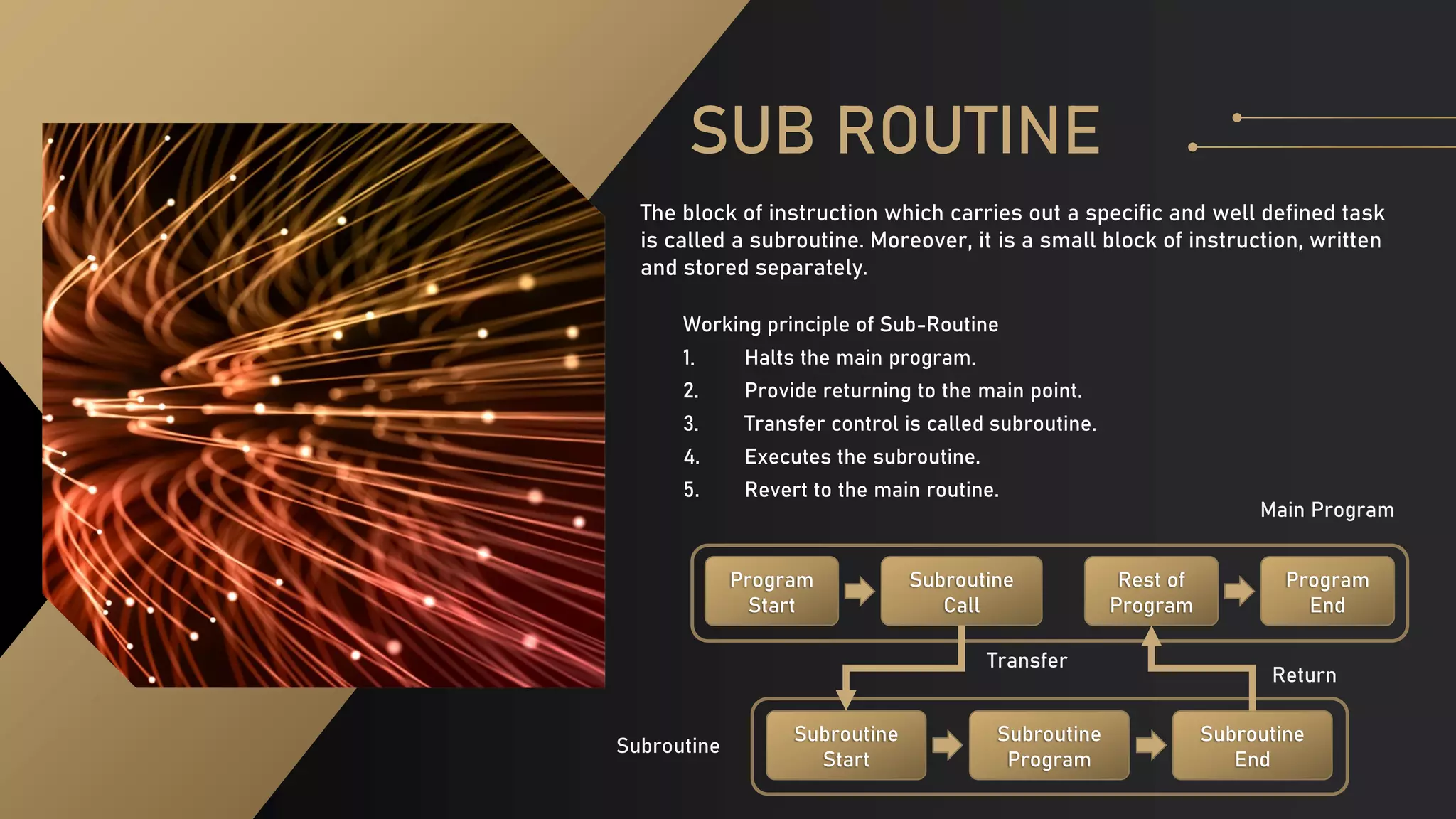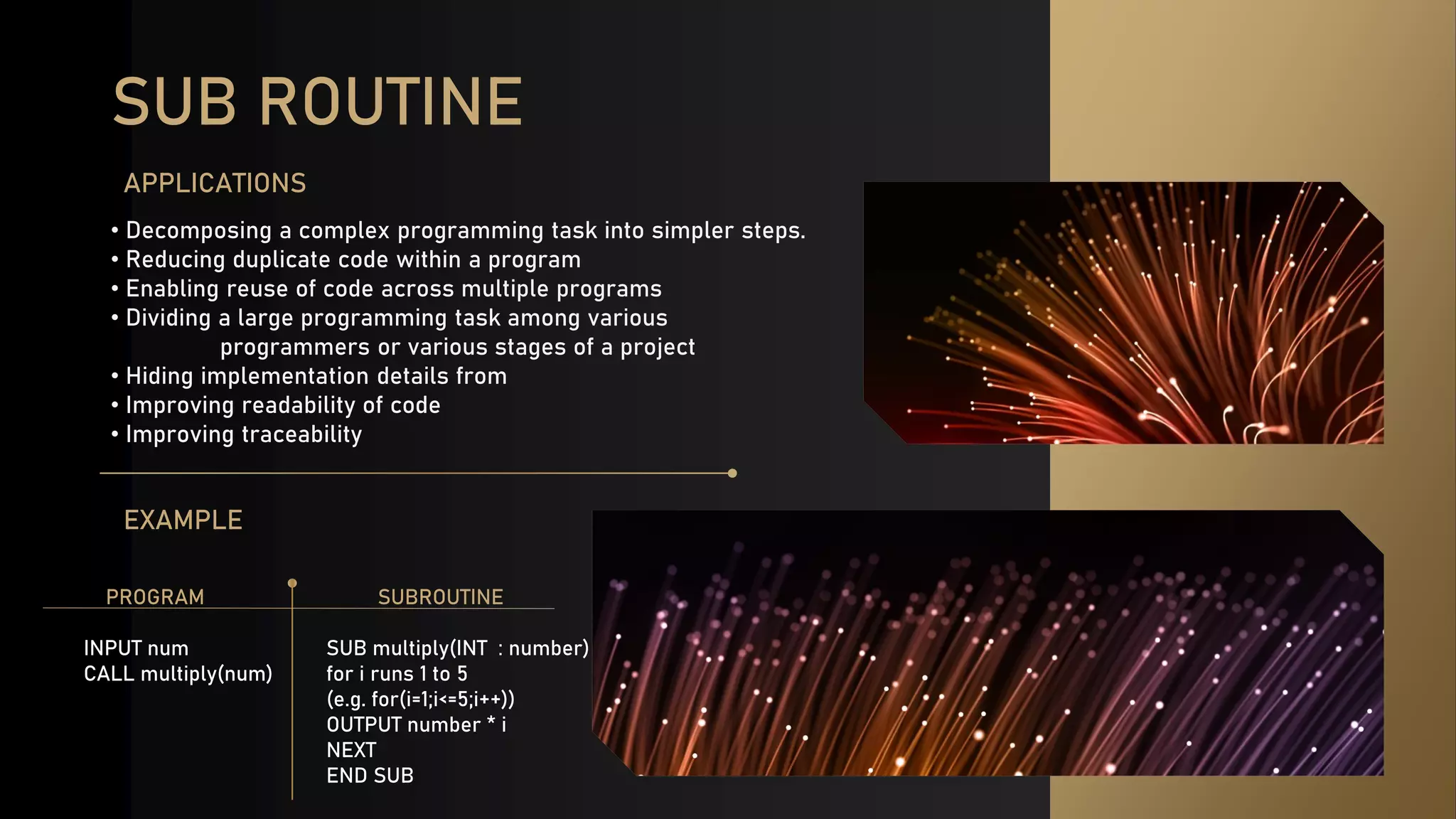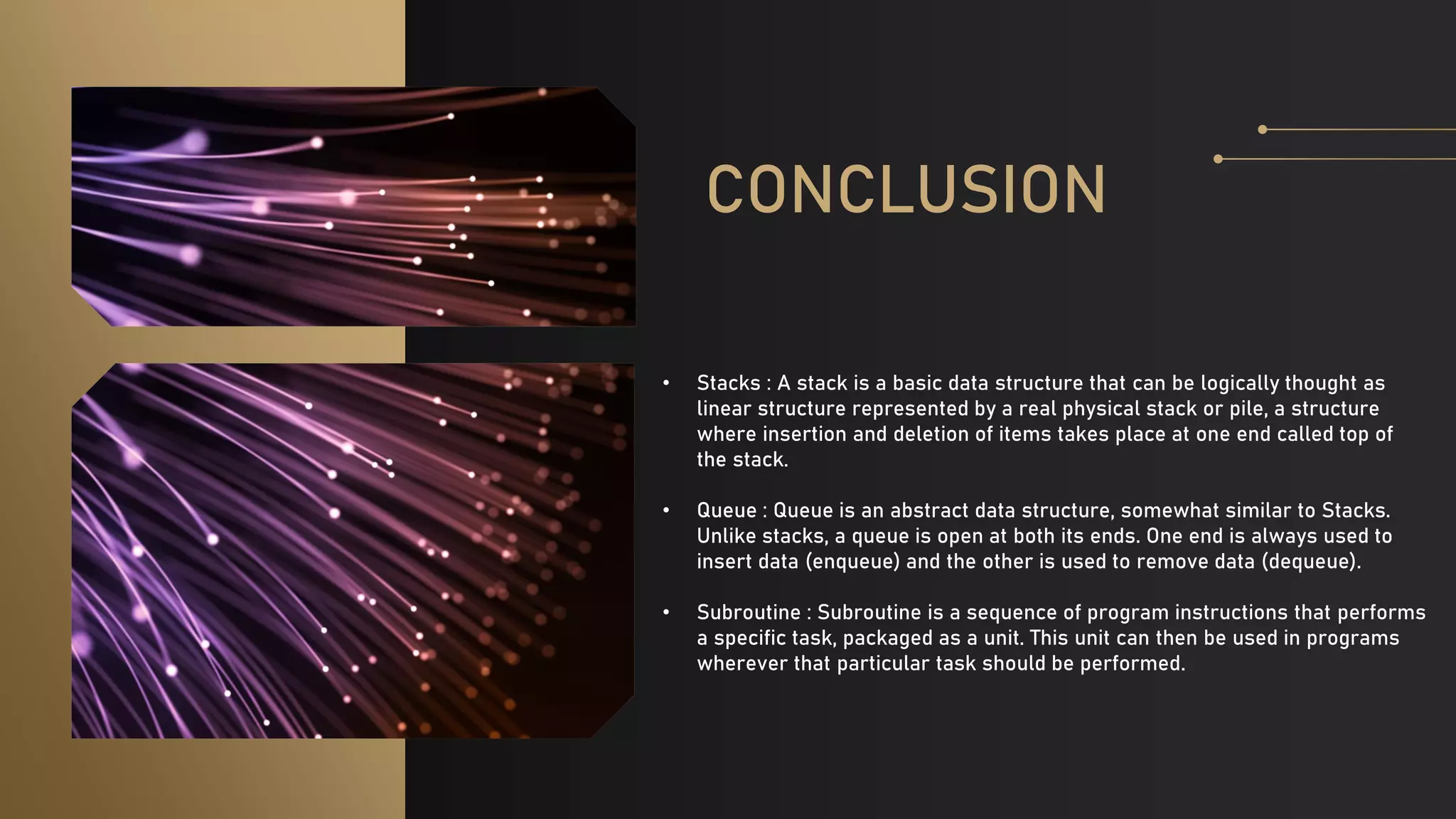The document explains the concepts of stacks, queues, and subroutines in data structures. It covers their definitions, operational principles, applications, and differences, highlighting practical examples such as the use of stacks in recursion and queues in sequential processing. The conclusion emphasizes that stacks and queues facilitate data flow manipulation, while subroutines allow for task-specific programming modularity.
